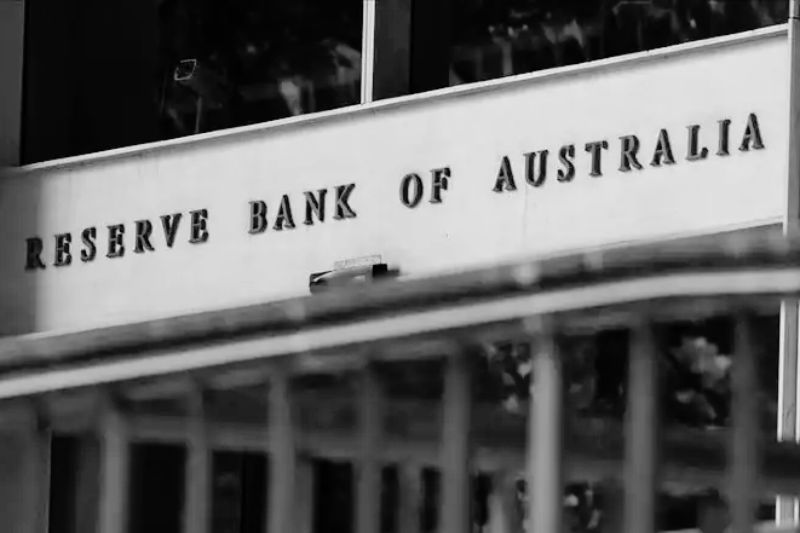Early every month Australians with big mortgages anxiously wait to find out if the Reserve Bank will raise interest rates and put more pressure on their domestic budgets. It is a bit like waiting for pronouncements from the modern day equivalent of the Delphic oracle, the central bank governor being some kind of hierophant.

It is more pantomime than authoritative insight. Central banks have not been able to manage or predict economies since the financial deregulation of the 1980s. It would be better if they followed the ironic dictum: ‘Don’t just do something, stand there.’ Instead of having consumer price stability as their prime imperative, they should instead aim for stable interest rates because it is at least something they can control.
That means leaving interest rates somewhere between 4-6 per cent, the historical average. It would ensure that the most fundamental metric in capitalism, the cost of capital, remains a still point in what is a fragile financial system plagued by excess and crises.
The report card of central banks in developed economies is dismal, although it Is not really their fault. Once developed economies went down the path of deregulation it meant that central banks no longer had any control over the quantity of money, only its cost (the interest rate).
How, without direct control over how much money is in the system, are they supposed to control inflation? According to conventional wisdom, inflation is a result of too much money chasing too few products. Trying to control it only with interest rates is the equivalent of fighting a boxing match with only one hand. You can land the occasional blow, but you will always end up losing.
Even measuring the quantity of money in modern financial markets has become a vexed issue. Around the turn of the century, the American financial authorities actually considered no longer using M3, the most commonly referenced measure of money supply, because the markets had become so complex it seemed no longer meaningful.
As Andrew Leigh notes in The Shortest History of Economics central banks in the 1980s stopped targeting the quantity of money, or credit, in the system because there was an increasing recognition that inflation and the money supply were rubbery statistics. ‘As one frustrated central banker put it: “We didn’t abandon the monetary aggregates, they abandoned us”’, writes Leigh.
'Higher interest rates will only lower demand, they have little effect on supply. So it is time for them to stop pretending they are in charge. They should keep interest rates within a stable band and maybe use their platform to criticise the greed-driven behaviour of private actors in the financial system who are the ones really responsible for the problems that the developed world faces.'
By pretending to control consumer price inflation when they cannot, central bankers have tended to exacerbate problems and create massive financial distortions. They have been followers, not leaders – the statistics they use are retrospective – and it has routinely led to poor policy.
In Australia it can be seen in the socially destructive house price bubble of the last two decades. Initially, it was due to reckless bank lending and poorly crafted tax policy: overly generous negative gearing provisions and sharp reductions in capital gains tax. But the RBA made sure to make it even worse by dropping interest rates to near zero because they believed CPI inflation was ‘tamed’.
Meanwhile property inflation – something the RBA claim they cannot measure because asset prices can rise even if there is no actual transaction – ballooned. That in turn intensified the bank lending and the amount of credit in the system because it became so much more expensive to buy houses.
Other central banks in developed economies did not fare any better. Japan was the worst performed. In 1990 there was a spectacular property price collapse, and for the subsequent 34 years the Bank of Japan has tried to increase Japanese borrowing – Japanese corporates and consumers became very debt averse – in order to stave off deflation and recession. At one point, Japanese interest rates were actually negative. The result? More entrenched deflation and recession.
The US Federal Reserve has been similarly impotent. The former chair of the Fed, Alan Greenspan, spent much of the 1990s trying to avoid the fate of Japan by lowering interest rates, creating what was known as the ‘Greenspan put’. He would step in to support financial markets by lowering interest rates whenever there was a downturn or crisis which greatly favoured anyone who was manipulating debt.
That practice has continued, leading to massive distortions and contributing to America’s massive debt burden. Interestingly, though, the current chairman of the Fed, Jerome Powell, seems to have abandoned the ‘Fed put’, much to the fury of the financial markets.
It is probable that inflation will continue to be high. Once it starts, it tends to be self-reinforcing. Moreover, much of the current price pressure is on the supply side, probably because of damage to globalised production systems during Covid. It is not helped by increasingly onerous trade sanctions.
Central banks cannot control that. Higher interest rates will only lower demand, they have little effect on supply. So it is time for them to stop pretending they are in charge. They should keep interest rates within a stable band and maybe use their platform to criticise the greed-driven behaviour of private actors in the financial system who are the ones really responsible for the problems that the developed world faces.
David James is the managing editor of personalsuperinvestor.com.au. He has a PhD in English literature and is author of the musical comedy The Bard Bites Back, which is about Shakespeare's ghost.